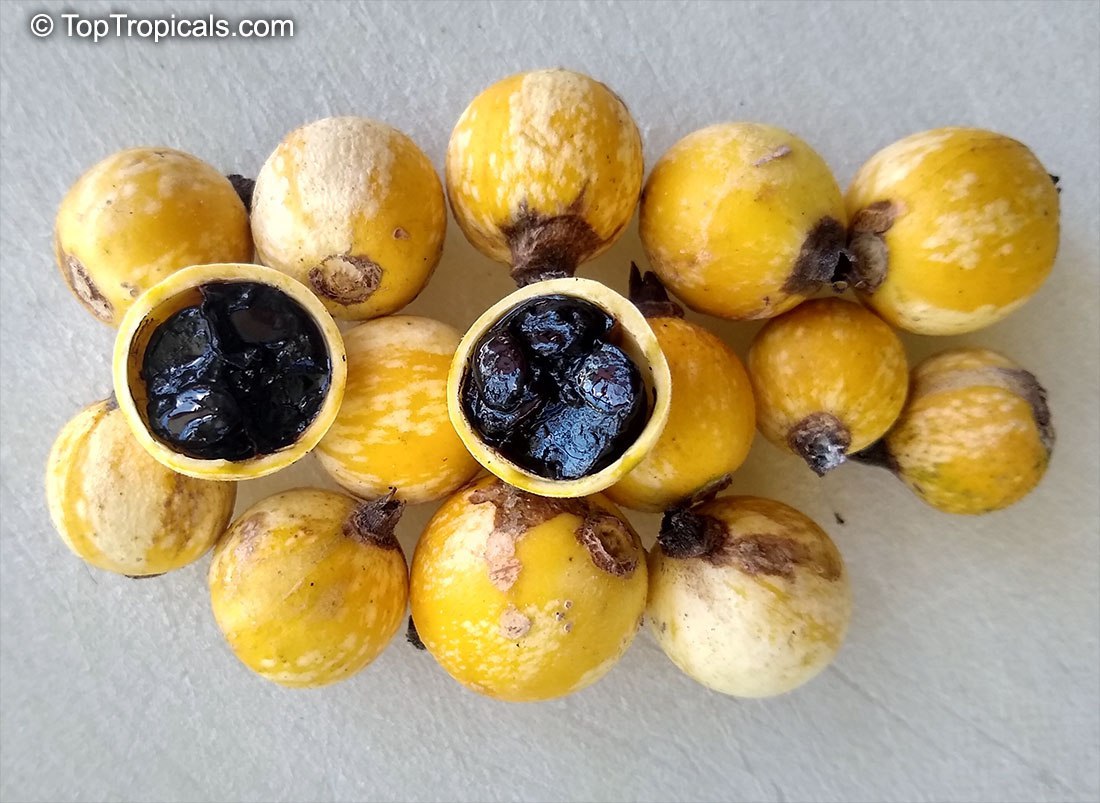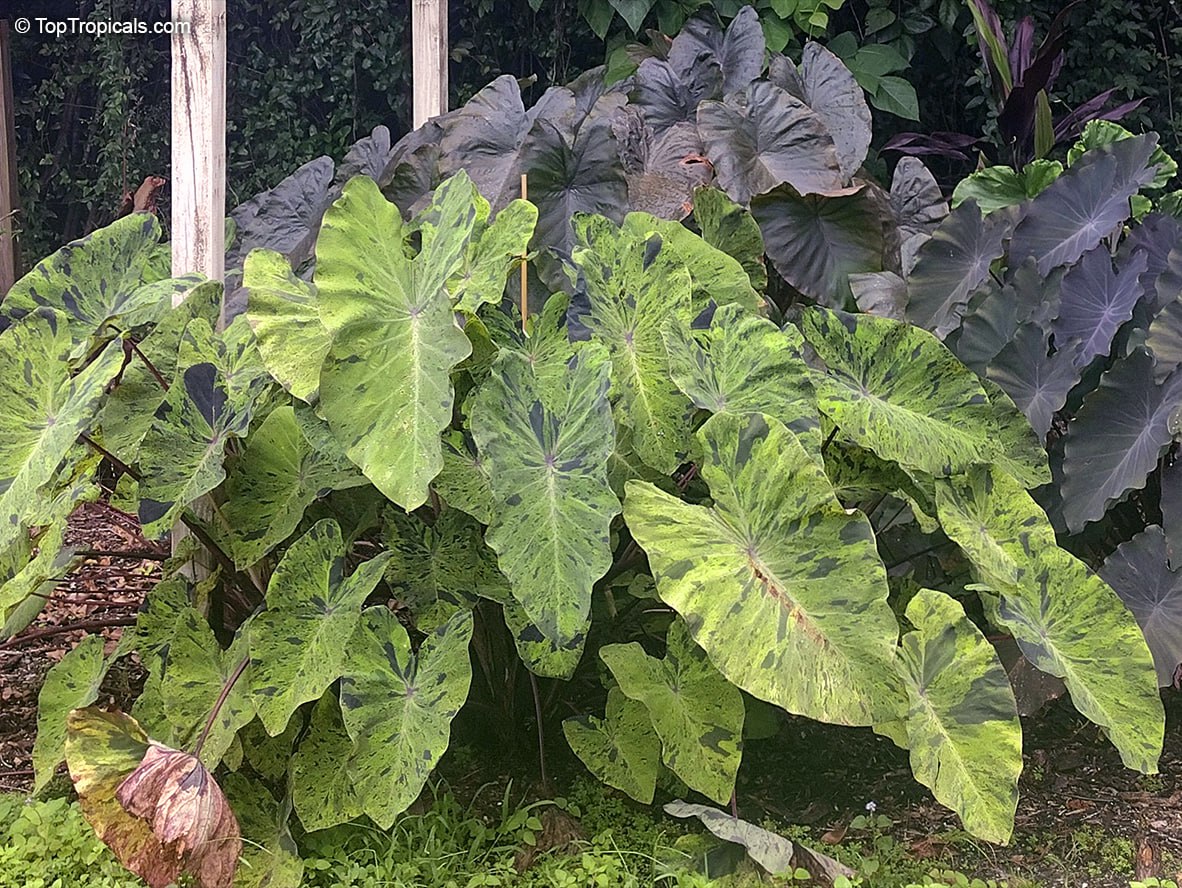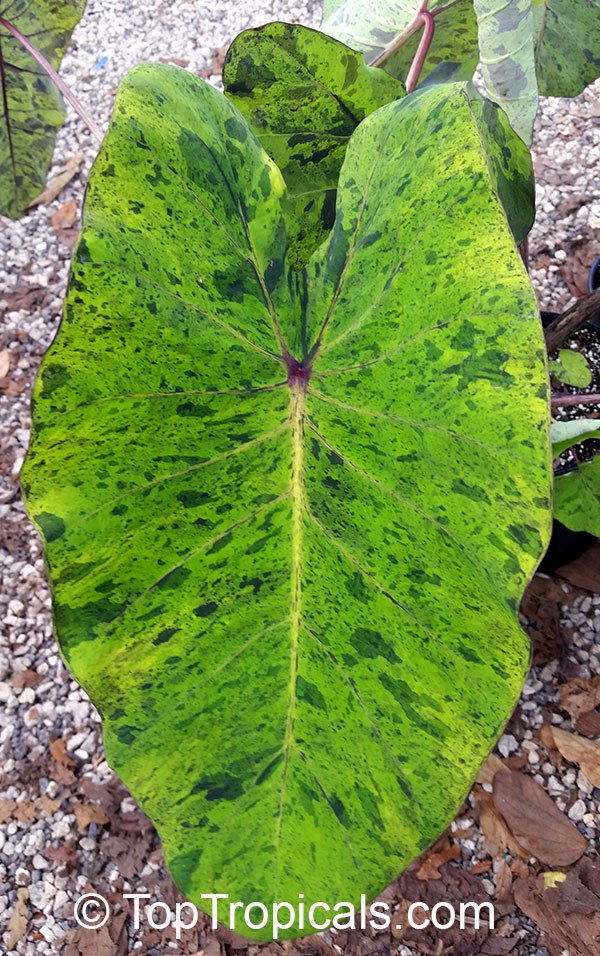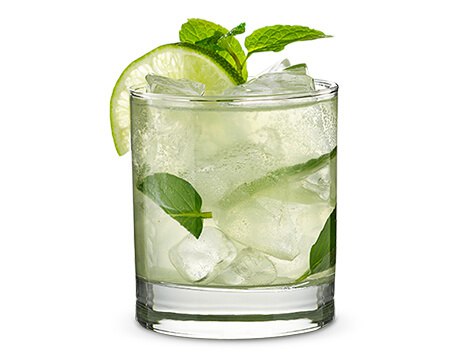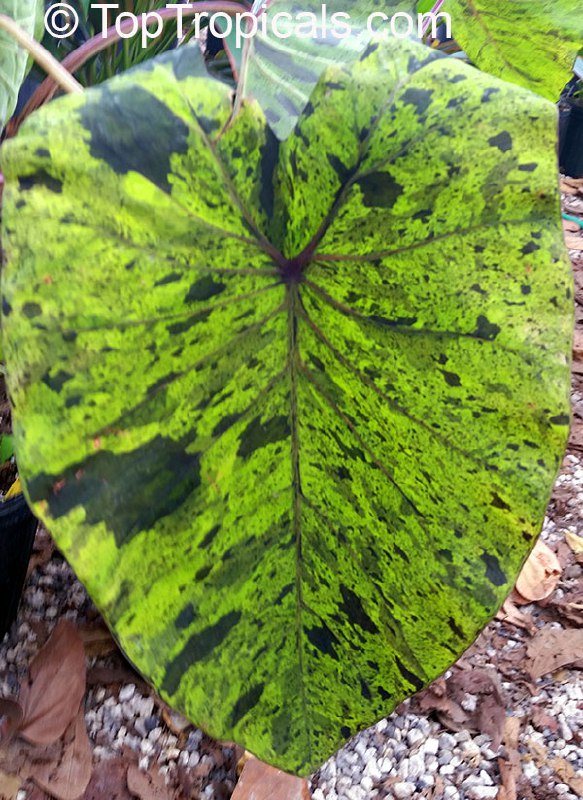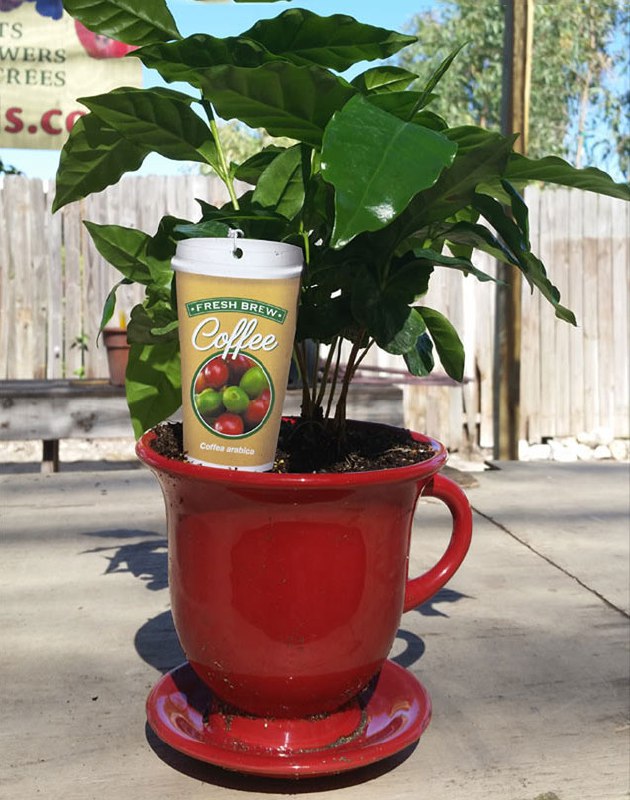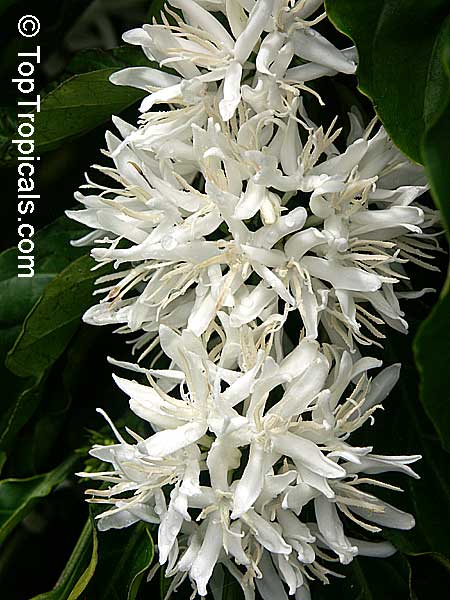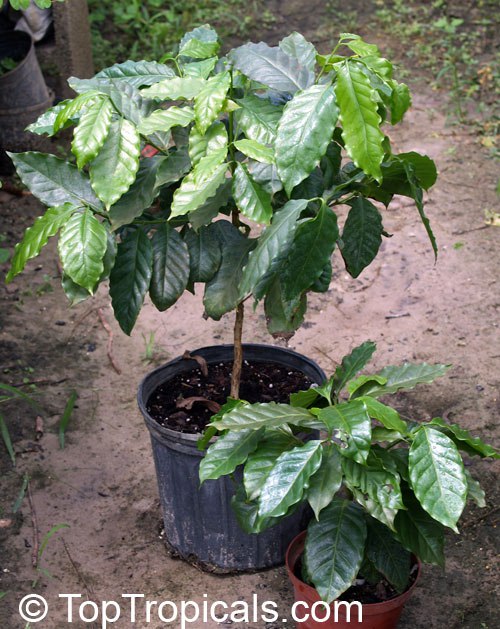Garden Blog - Top Tropicals
Where does Blackberry Jam come from? It comes from Gardenia!
Randia formosa - Blackberry Jam Fruit, Jasmin de Rosa is a curious small evergreen tree from South America that combines features of a fragrant flower and delicious dessert fruit which tastes like fresh Blackberry jam. Fragrant white flowers are similar to Gardenia.
This relatively hardy tropical can be grown in a container as well as in the ground. It's very сompact (4-5 ft), perfect for container culture, will fruit in a container.
Kids love the fruit! Many claim that it is even better than Blackberry preserves.
Large tubular white flowers attract nocturnal moths. Since the plant is closely related to the gardenia (Rubiaceae plant family), its flowers are sweetly fragrant.
Produces as many as 25-30 fruits at a time. Since it blooms for a few months from Summer through Winter, fruiting and flowering can be enjoyed even when other plants are dormant.
Article about Blackberry Jam Fruit formosa
Order Blackberry Jam tree
#Food_Forest #Container_Garden
🏵 TopTropicals
Why everyone wants the Sugar Apple?
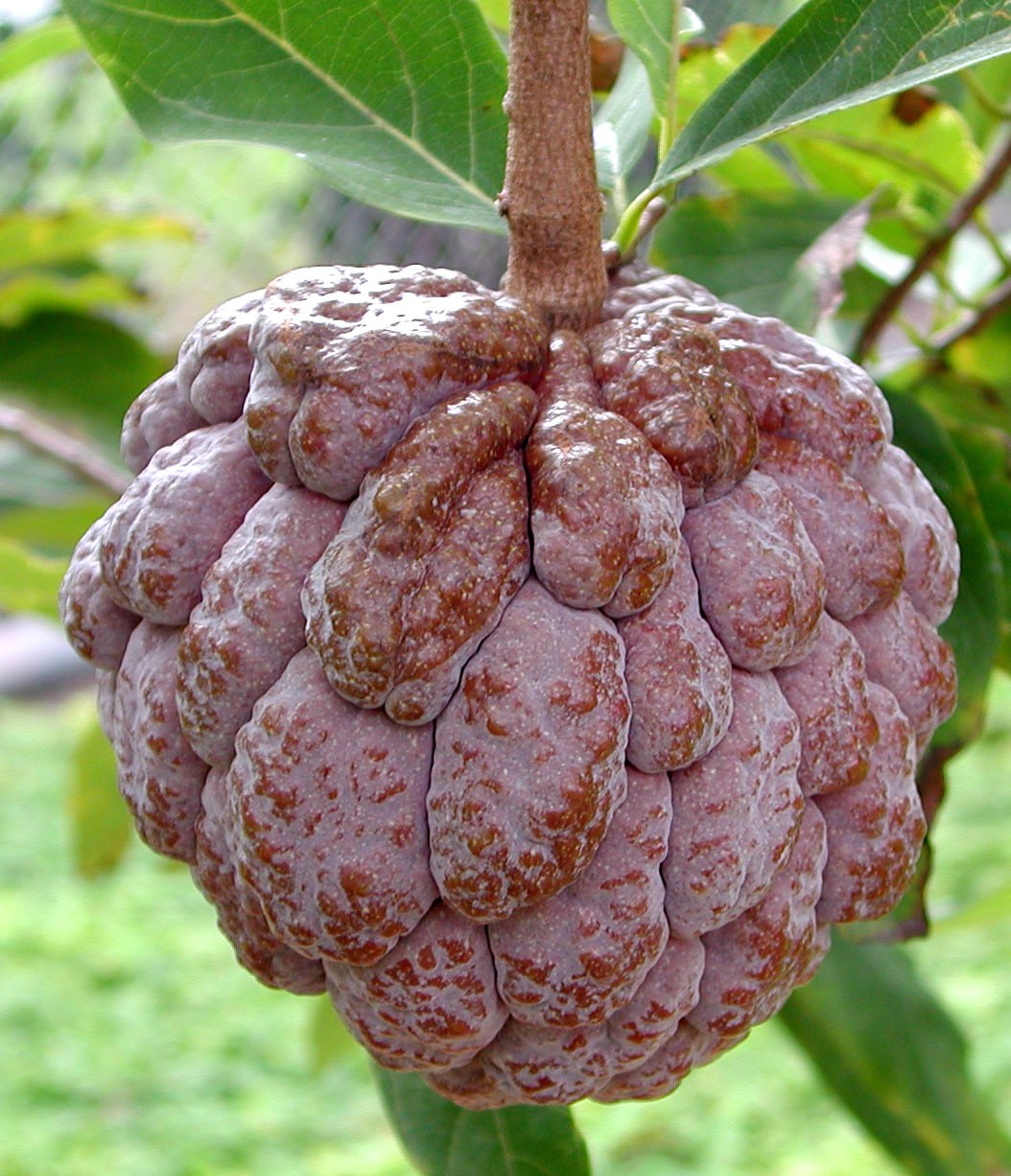
Annona squamosa - Sugar apple, Red fruit Kampong Mauve
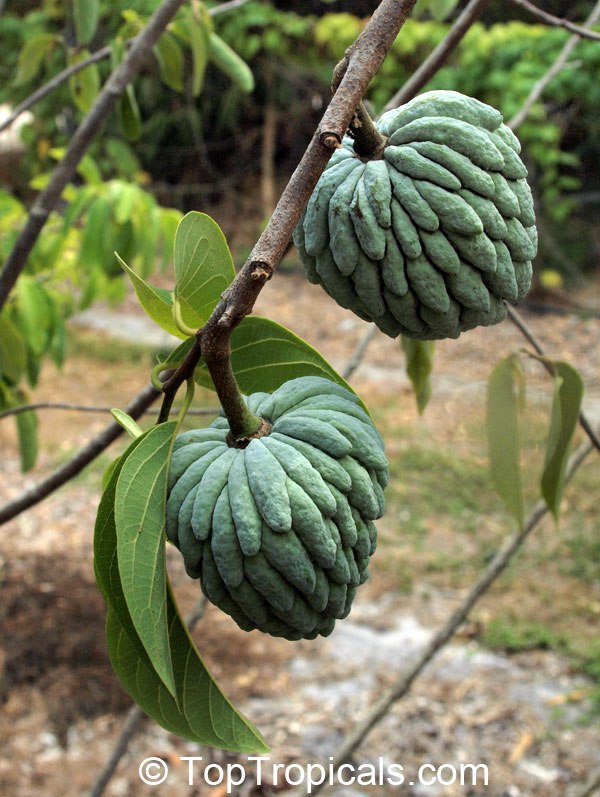
Annona squamosa - Sugar apple, Green fruit Thai Lessard
Annona squamosa - Sugar apple - is considered by many as the most delicious tropical fruit. We introduced the Annona trees earlier.
- ✳️ Very small, compact tree, perfect for container or small yard, see photos from our Tropical Fruit Tree contest Winner.
- ✳️ Starts fruiting within 3 year from seed!
- ✳️ Easy to grow and undemanding
- ✳️ The fruit is sheer deliciousness, pulp resembling custard.
🛒 Order Sugar Apple
#Food_Forest #Container_Garden
🏵 TopTropicals
Would you like to spice Up Your Garden with Variegated Ginger?
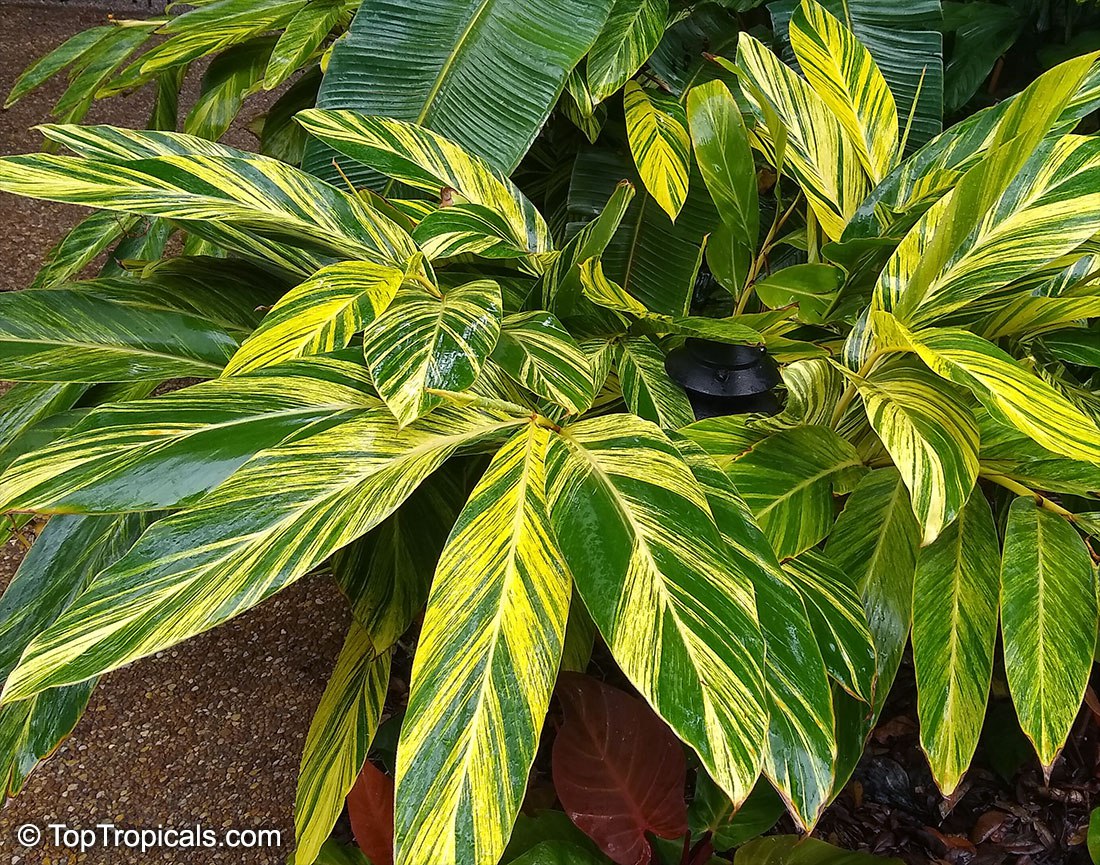
Alpinia Zerumbet Variegata Variegated Ginger
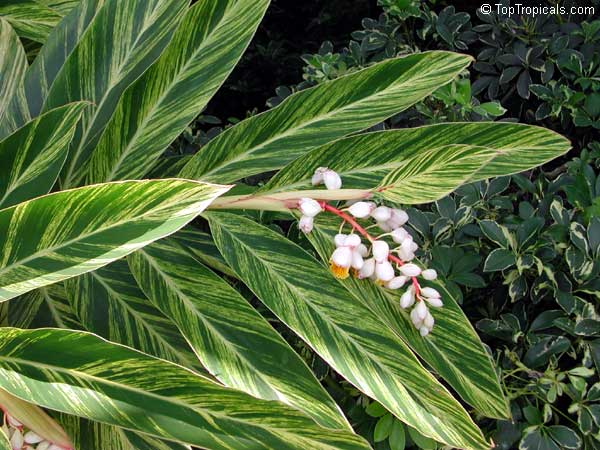
Alpinia Zerumbet Variegata Variegated Ginger
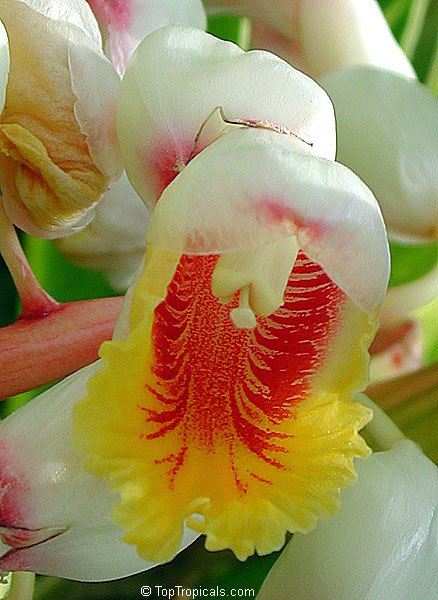
Alpinia Zerumbet Variegata Variegated Ginger flower
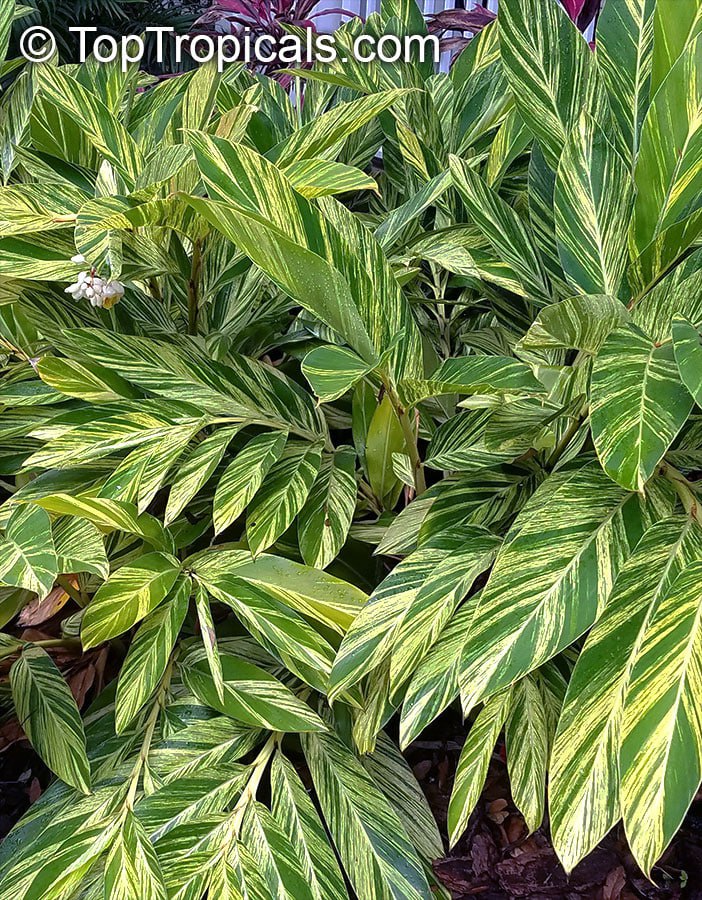
Alpinia Zerumbet Variegata Variegated Ginger

Alpinia Zerumbet Variegata Variegated Ginger
- 🌿 Alpinia Zerumbet Variegata is a clumping ginger valued for its beautiful variegated foliage. With its colorful foliage and beautiful flowers, variegated ginger is a stunning ornamental.
- 🌿 Striking Foliage: Glossy green leaves with white striping add a pop of color and interest to your garden.
- 🌿 Unique Flowers: Unlike other gingers, its beautiful, fragrant, shell-like flowers droop from leafy stems, adding summer charm.
- 🌿 Perfect Size: This small shrub grows 2-4 feet tall and can be pruned for size control.
- 🌿 Moisture Lover: Keep the soil moist for happy, thriving plants.
- 🌿 Ideal Conditions: Thrives in shaded garden corners with organically rich, well-drained soil. Mulch for best results.
- 🌿 Low Maintenance: No serious insect or disease problems, making it an easy addition to your garden.
- 🌿 Indoor Option: Can be grown as a houseplant with bright light and humid conditions, reaching 3-4 feet indoors.
- 🌿 Edibe: Like every ginger, this ornamental beauty also has edible rhizomes.
🛒 Shop Vriegated Ginger
#Shade_Garden #Container_Garden #Food_Forest
🏵 TopTropicals
Craving a Mojito? Beat the Summer heat with Mojito Elephant Ears!
Colocasia sculenta Mojito, a spectacular variety of Elephant Ears, is a must for a rare plant collection:
- 🐘 Striking variegation: bold, mottled leaves in shades of green and dark purple, reminiscent of a refreshing mojito!
- 🐘 Large, impressive leaves: massive, heart-shaped leaves that create a dramatic and tropical look.
- 🐘Versatile: thrives in both sun and partial shade, making it adaptable to various garden locations.
- 🐘 Water-loving: ideal for bog gardens, ponds, or as a stunning addition to water features.
- 🐘 Container friendly: perfect for pots and containers, allowing you to bring its tropical charm to patios and balconies.
- 🐘 Fast growing: quickly establishes, providing lush foliage and rapid visual impact.
- 🐘 Low maintenance: minimal care once planted, making it a great choice for both beginner and experienced gardeners.
- 🐘 Heat and cold tolerant: performs well in warm climates. During cool winters, leaves may die back and regrow in Spring.
- 🐘 Edible tubers: produces edible corms (roots) that are a staple in many cuisines, adding a functional aspect to its beauty.
- 🐘 Unique garden accent: an eye-catching focal point or accent plant.
🛒 Get some Mojito for your garden
#Nature_Wonders #Food_Forest #Container_Garden #Shade_Garden
🏵 TopTropicals
Can you eat bird-looking flowers? You can eat the whole tree!
Sesbania grandiflora - Hummingbird Tree
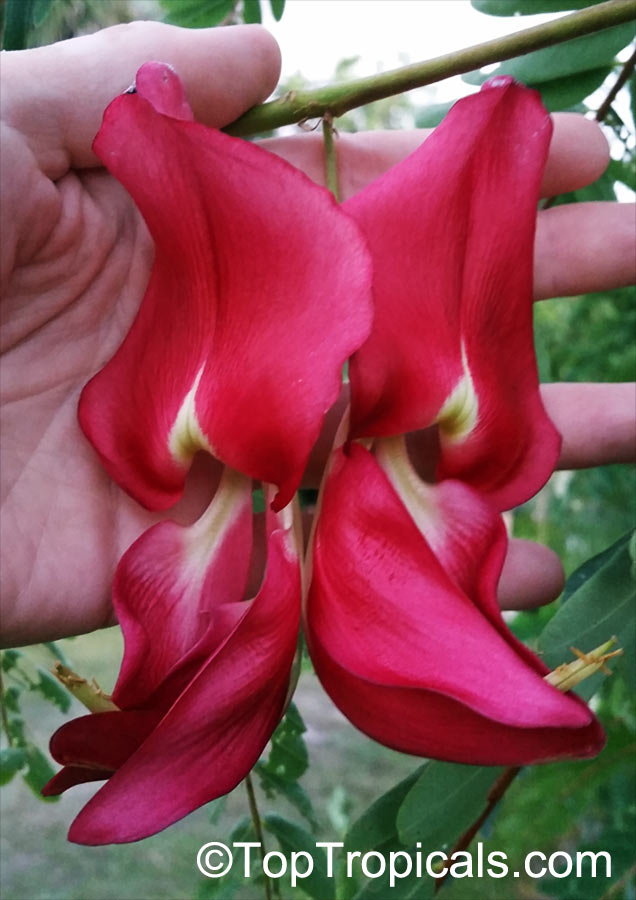
Sesbania grandiflora - Hummingbird Tree Red flower
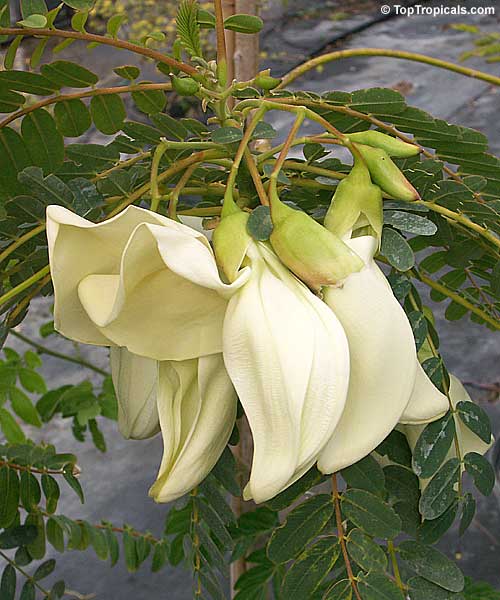
Sesbania grandiflora - Hummingbird Tree White flower
- 🐧 Sesbania grandiflora - Hummingbird Tree - is named for its flowers resembling little birds.
- 🐧 It produces a mass of large, 3-4", curved flowers from November to June. Flowers can be coral red or white.
- 🐧 The fun part is - the flowers are edible! As well as the rest of the plant: tender leaves, green fruit (bean pods), and flowers, used in curries, salads, or fried in batter.
- 🐧 Medicinal uses: bark, leaves, gums, and flowers have medicinal properties.
- 🐧 Lower branches form a beautiful floral canopy. It is a fast growing, but a small tree that will fit any yard. Great everblooming tree for container culture.
🛒 Get an edible Hummingbird Tree
#Food_Forest #Remedies #Butterfly_Plants #Container_Garden #Fun_Facts
🏵 TopTropicals
Who wants a cold hardy, dramatic looking tropical fruit tree with a sweet fruit? Or, who doesnt?
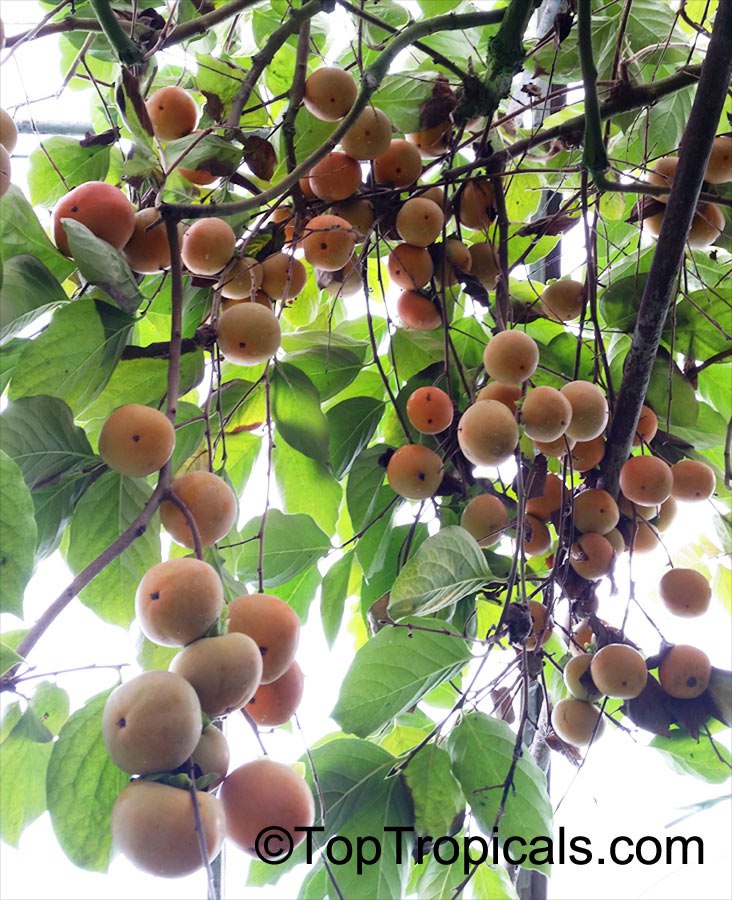
Persimmon (Diospyros sp.)

Persimmon (Diospyros sp.)
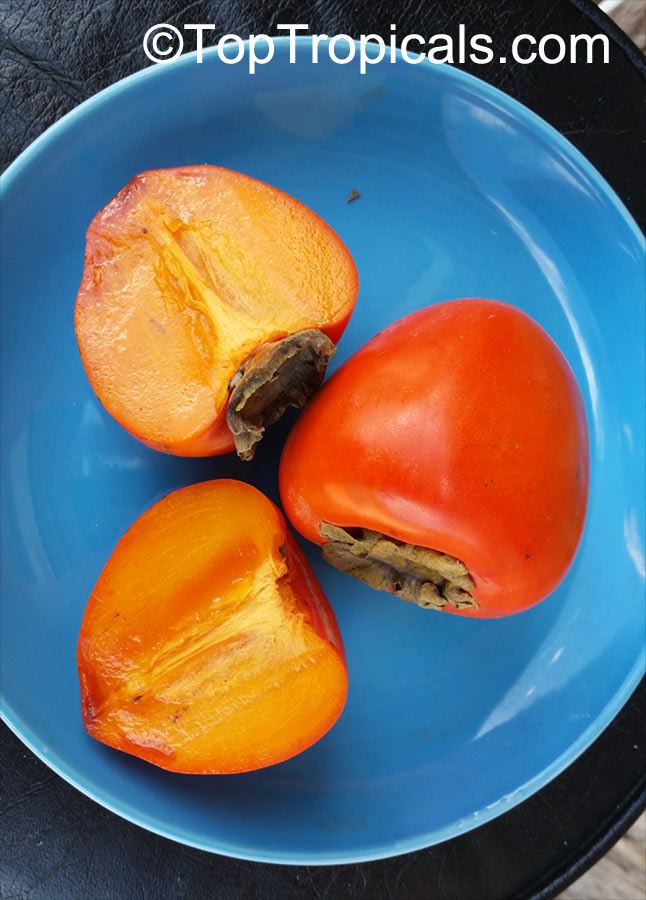
Persimmon (Diospyros sp.)

Persimmon (Diospyros sp.)

Persimmon (Diospyros sp.)
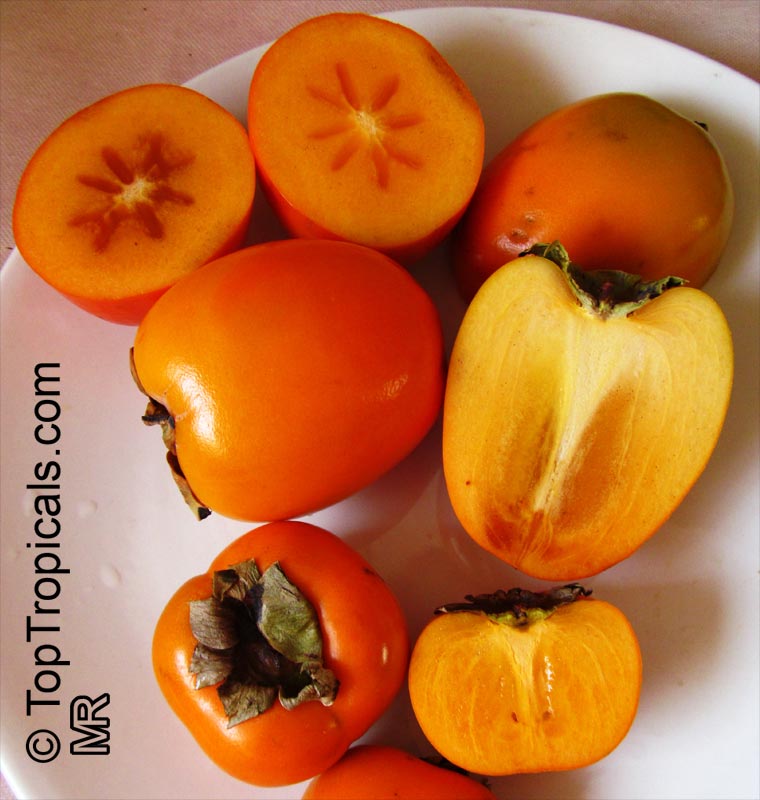
Persimmon (Diospyros sp.)
- 🍑 Persimmon (Diospyros sp.) is a graceful, small, subtropical fruit tree from China, with multitrunked or single-stemmed structure and drooping leaves and branches, turning dramatic shades in autumn.
- 🍑 People love Persimmon fruit for its sweet and unique flavor, often described as a blend of honey and apricot.
- 🍑 The tree thrives in deep, well-drained loam soil, tolerating alkaline conditions.
- 🍑 The fruit classified into astringent (soft, sweeter pulp) and non-astringent (crunchy) cultivars.
- 🍑 Best Varieties for Container Culture:
- 🍑 Hardy to USDA zones 7-10, may need protection in colder regions.
Non-Astringent: Fuyu, Giant Fuyu, Matsumoto-Wase, Jiro, Maekawa, Izu.
Astringent: Chocolate, Guang Yang, Hachiya, Meader, Saijo, Tanenashi, Winterset.
📚 How to grow Persimmon tree
🛒Order Persimmon Tree
#Food_Forest #Container_Garden
🏵 TopTropicals
What was discovered in the Pyramids: Pigeon Pea - an Ancient Superfood
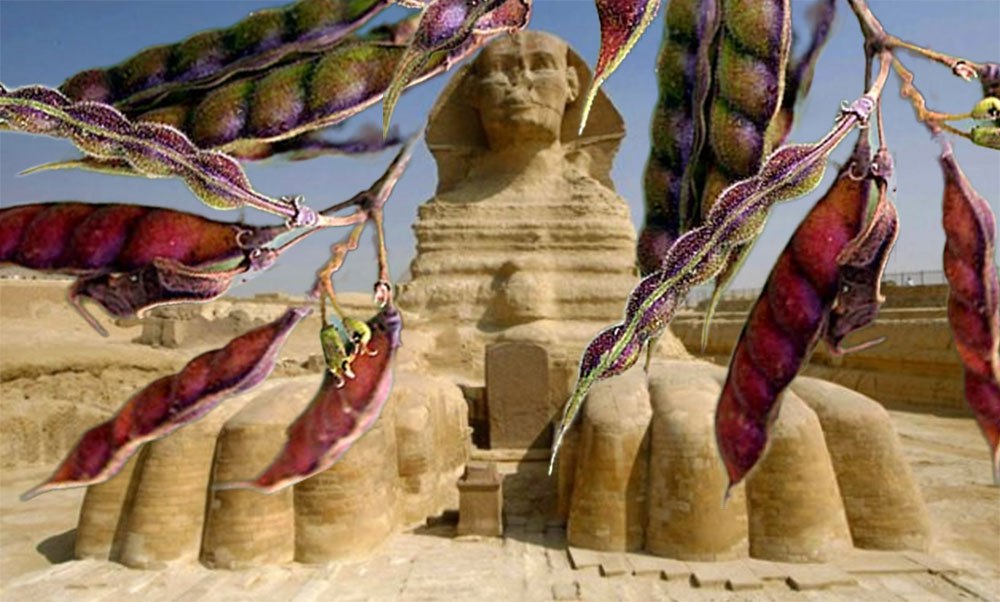
Cajanus cajan - Pigeon Pea and Egyptian pyramids
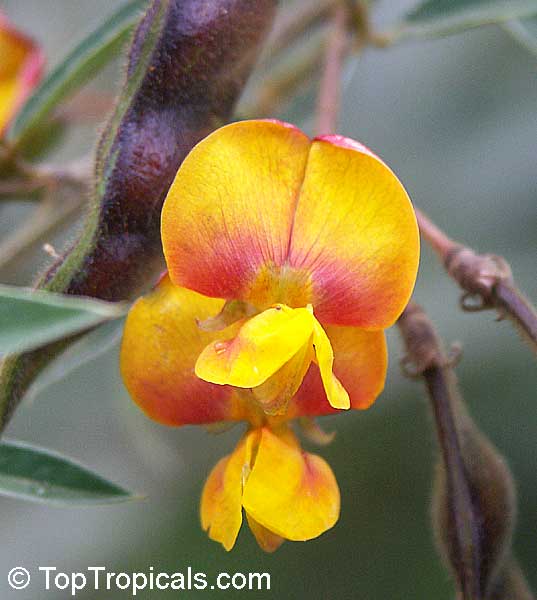
Cajanus cajan - Pigeon Pea
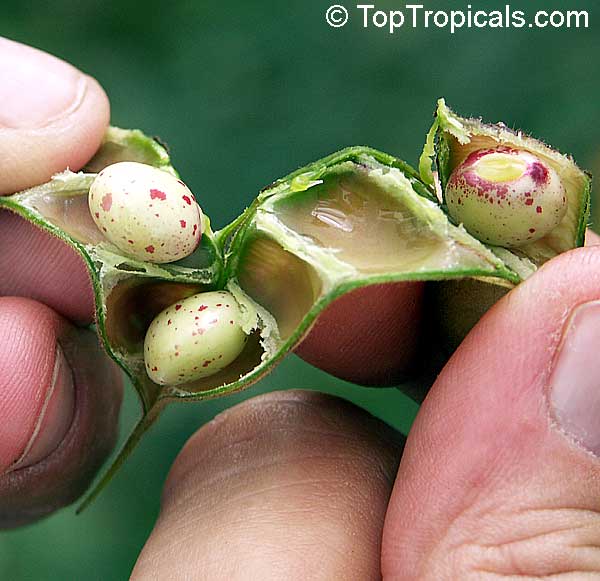
Cajanus cajan - Pigeon Pea
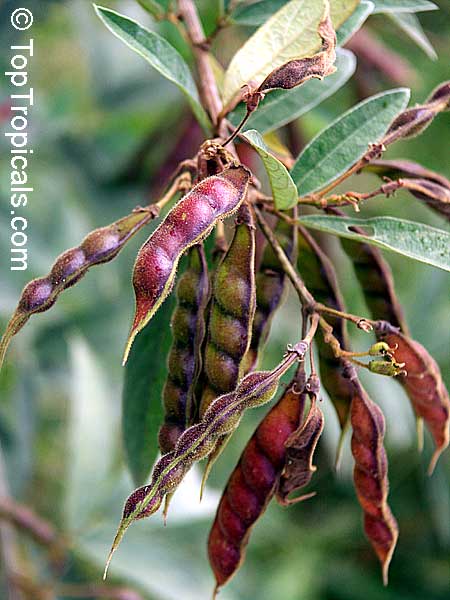
Cajanus cajan - Pigeon Pea
- Cajanus cajan - Pigeon Pea - existed for more than 4800 year! It's been widely consumed in South Asia, South East Asia, Africa, and Latin America. Documented in India since 2,800 BC; reached Ancient Egypt around 2,200 BC.
- Provides flavorful, nutritious, and healthy food, with potential to become widely popular like Japanese sushi 🍱
- It is a showy perennial woody shrub or small tree, 4-8 ft tall, with soft leaves. Can be grown in container
- Pretty flowers are yellow, with purple or red streaks, pods containing oval to round seeds.
- Many culinary uses: the tasty and healthy beans used in rice dishes, soups, stews, tempeh, tofu. Unripe pods eaten in curries, leaves and young shoots cooked as a vegetable.
- Rich source of fiber, protein, vitamins (B, C, E, K), and minerals (calcium, iron, magnesium, manganese, phosphorus, potassium, zinc).
- Medicinal value: various folk medicinal uses for sores, bladderstones, jaundice, skin irritations, bronchitis, coughs, pneumonia, toothache, dysentery, and more.
- Everyone can grow it! The plant is super easy, tolerates poor soils, drought tolerant, improves soil quality like many other beans.
📚 Learn more about Pigeon Pea
🛒Grow your own Pigeon Pea Superfood
#Food_Forest #Remedies #Container_Garden #Fun_Facts
🏵 TopTropicals
How Blue Jaboticaba is different from regular Jaboticaba?
Blue Jaboticaba tree, Myrciaria vexator
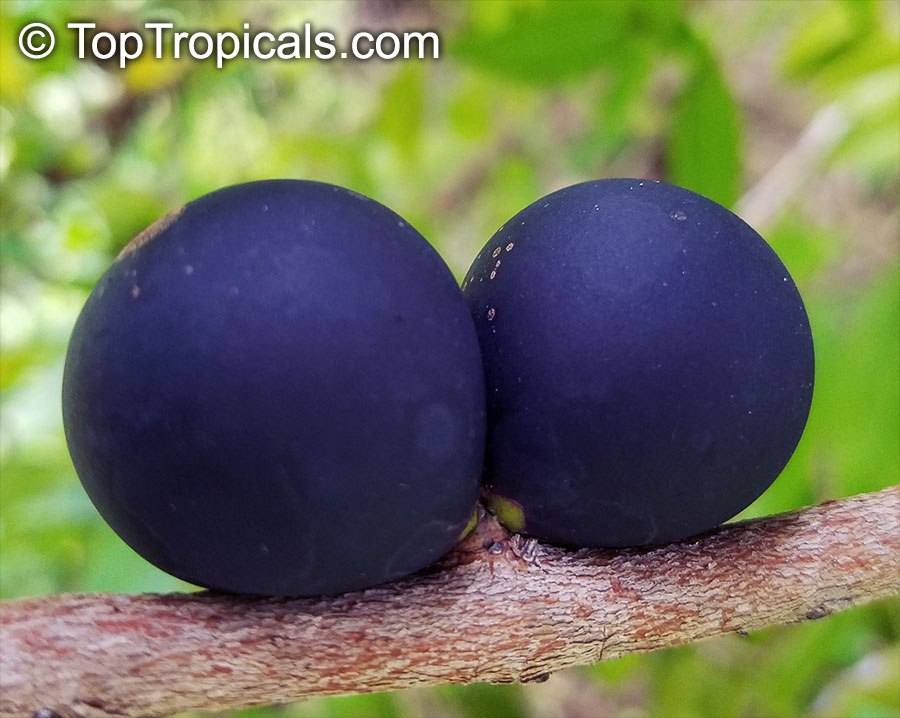
Blue Jaboticaba tree, Myrciaria vexator
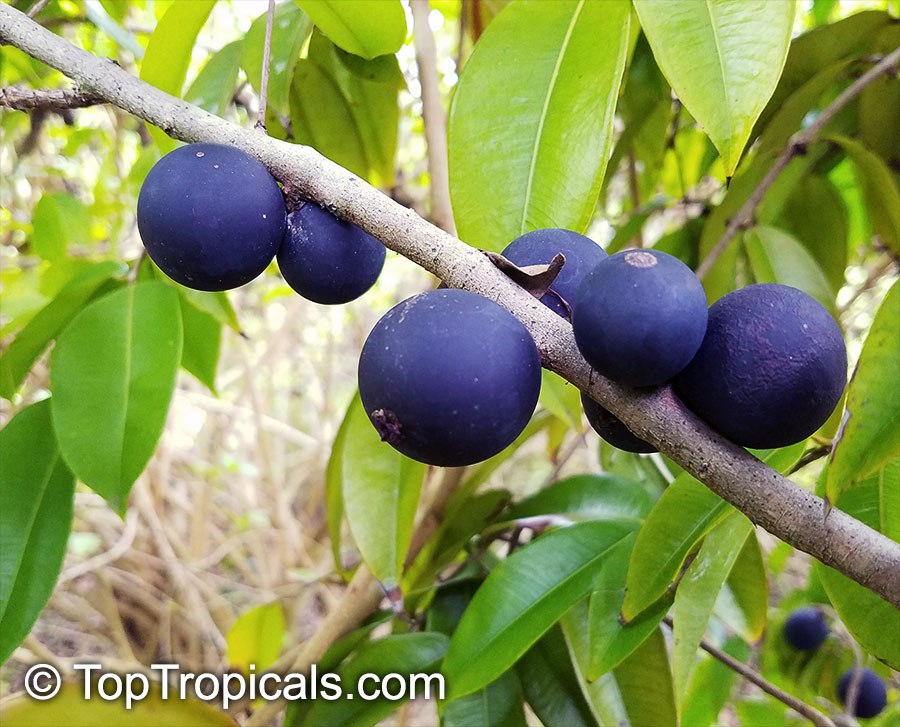
Blue Jaboticaba tree, Myrciaria vexator

Blue Jaboticaba tree, Myrciaria vexator

Blue Jaboticaba tree, Myrciaria vexator
In fact, they are very much alike! Just different species of Myrciaria that has somewhat smaller growth habit, which makes it an excellent container fruit tree! It also is much more productive.
- 🔵 Blue Jaboticaba tree, Myrciaria vexator is a beautiful slow growing tree or shrub. It bears dark purple, almost bluish fruits, with thin, sweet flesh that taste somewhat like sweet grapes.
- 🔵 Fruits are borne in late Spring or early Fall and usually eaten fresh or used in drinks.
- 🔵 The plant is little known in cultivation, yet the fruits are of equal or superior quality to regular Jaboticaba that we mentioned earlier. A single bush may produce several thousand fruits!
- 🔵 Blue Jaboticaba can tolerate light frost when established.
🛒 Order Blue Jaboticaba
#Food_Forest #Container_Garden
🏵 TopTropicals
What is the most popular and the easiest tropical fruit tree grown as a house plant?
No doubt about it - it's a Coffee tree!
- 🔸 Coffee is the most popular fruit tree suitable for indoors.
- 🔸 Coffee is shade loving plant, easy to grow, providing regular water.
- 🔸 Coffee grows into a beautiful dark green shrub or small tree.
- 🔸 The white, fragrant, star-shaped flowers are clustered and resemble gardenias to which they are related.
- 🔸 The whole fruit is edible, it is a small fleshy berry changing in color from green to yellow to red.
- 🔸 The seeds are the actual "coffee beans", they can easily be dried, roasted and ground at home.
🎁 Coffee is a perfect gift plant and a great indoor container fruit tree.
🎥 Coffee Tree Showcase · Grow your own: Free Coffee Everyday
🛒 Get your own Coffee Tree
#Food_Forest #Container_Garden #Shade_Garden
🏵 TopTropicals
What is Jaboticaba? It sounds so cool!
Jaboticaba (Myrciaria cauliflora) fruit
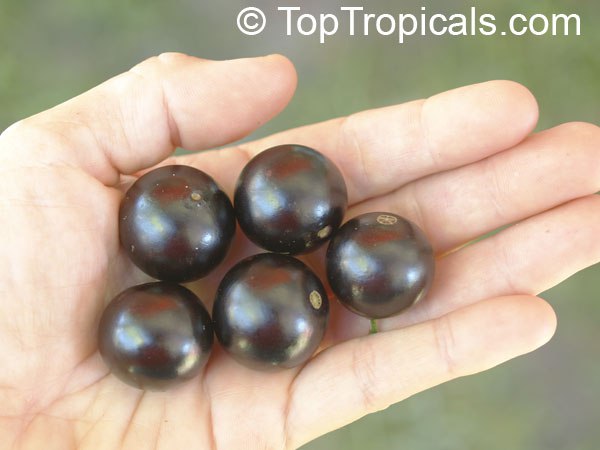
Jaboticaba (Myrciaria cauliflora) fruit
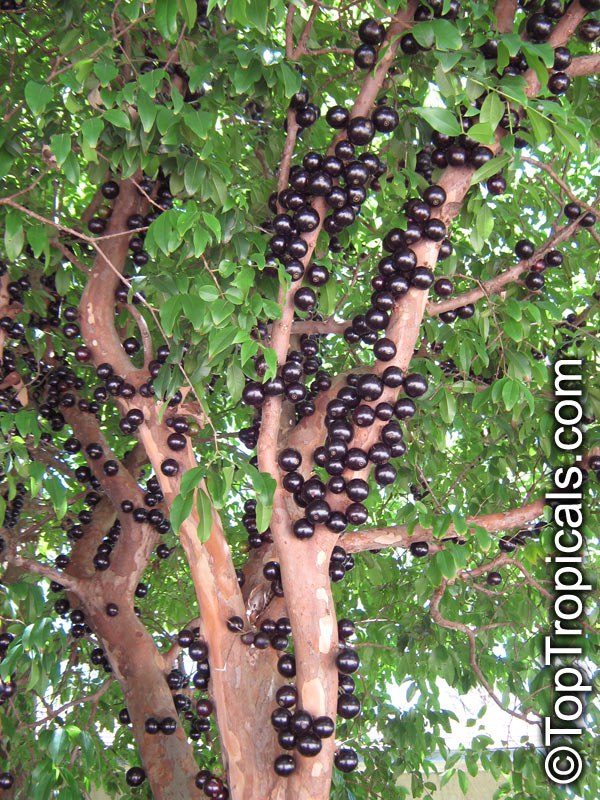
Jaboticaba (Myrciaria cauliflora) fruit on a tree
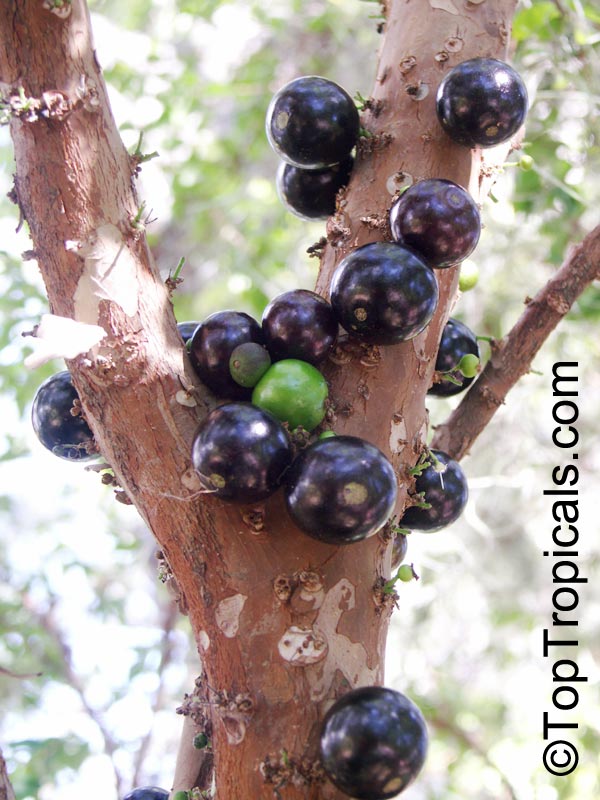
Jaboticaba (Myrciaria cauliflora) fruit
Jaboticaba (Myrciaria cauliflora) is the most popular native fruit of Brazil that famous Brazilian Vine La Vino Tinto is made of!🍷
- 🟣 Grape-like purple fruit with a thick skin and delicious melting pulp somewhat resembling Northern Black Currant in flavor.
- 🟣 Trees grow very slowly and due to small leaves and dwarfish growth habit are often used as bonsai. Some old bonsai specimens can fruit.
- 🟣 Larger specimens are very valuable because it takes Jaboticaba up to 7 years from seed to start fruiting.
- 🟣 Similar to Mamey, Jaboticaba has cauliflorous fruit - that grow on main stems or woody trunks.
- 🟣 Jaboticaba is relatively cold hardy, mature trees are taking down to 23 F for short periods without serious damage.
🎥 Video about a mail ordered Jaboticaba tree.
🛒 Shop Jaboticaba trees
#Food_Forest #Nature_Wonders #Container_Garden
🏵 TopTropicals
